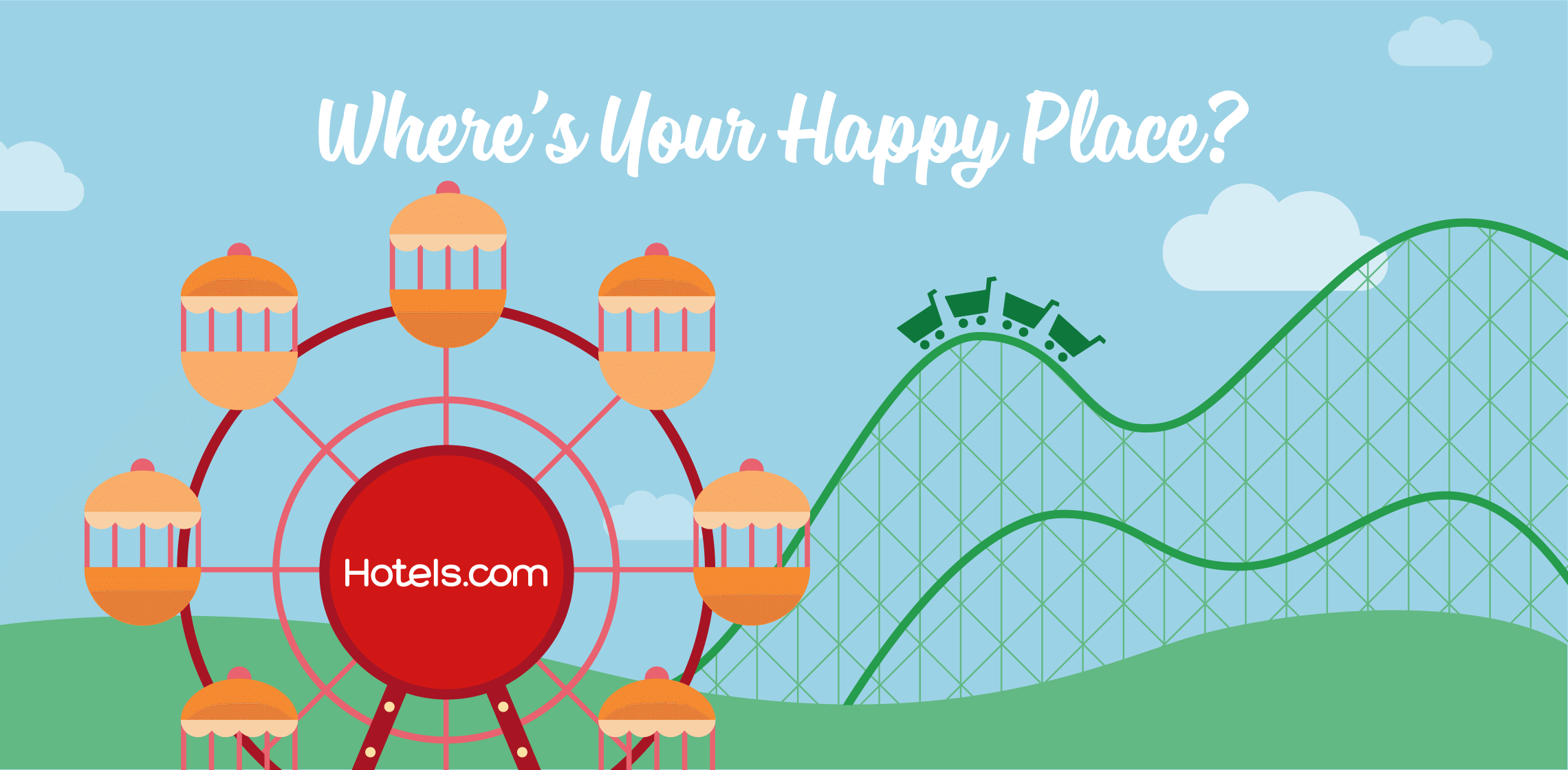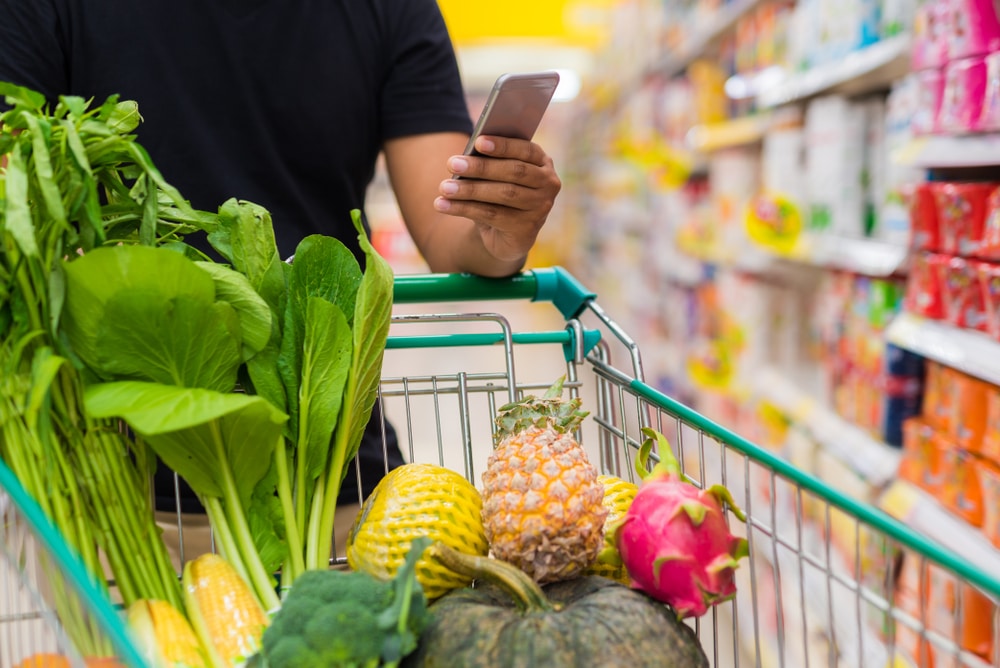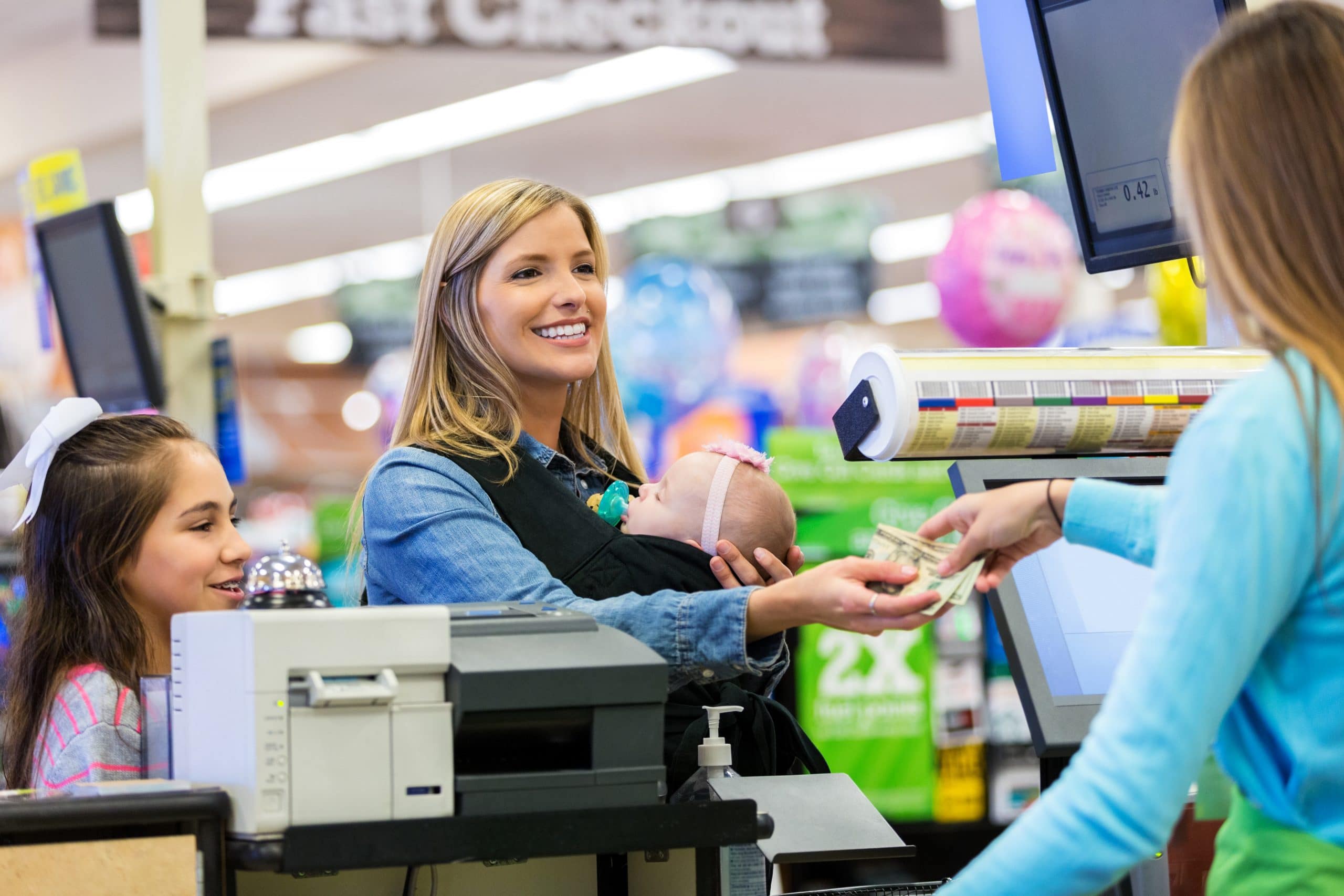CPG brands face many challenges in determining how to reach customers effectively. Continue reading “How to reach customers effectively in a crowded market”
Author: shopkick
3 innovative ways to communicate with customers
Finding innovative ways to communicate with customers is essential these days, as the way consumers shop has changed so much. Continue reading “3 innovative ways to communicate with customers”
5 best practices for brand storytelling on social media
Top 5 Apps to Use While Shopping in Stores
I have a question that’s often met with a great debate: Do you like shopping in stores in person, or do you prefer shopping online? I am not a stranger to the joys and pure convenience of shopping online. After all, nearly everything we need is at our fingertips without a closing time. However, I find it’s enjoyable, and often eye opening, to shop in stores.
My allegiance to shopping in stores may be due to the fact that I truly love any excuse for an outing – I typically catch up on podcasts or audiobooks while I drive, and I often join with friends to shop together. Plus, I almost always discover something in stores that I would have scrolled past online, especially if I’m searching for a new piece to add to my current season’s wardrobe.
In the past, the point that may have encouraged me to shop online rather than in stores was the ability to save money by using apps. But, I have discovered great options that completely justify my in-store allegiance and create the same type of seamless experience. Whether you’re running to Target, shopping for clothes, or purchasing your weekly groceries, I like to think of these apps as the top five best apps to use while shopping in stores. Here’s the rundown:
1. Target:
Because it’s so easy to add one more thing to my cart when I’m shopping at Target, I have turned to Target’s app for years. Their app used to be called Cartwheel, but they merged the Cartwheel feature together with the ability to search and shop. The combination has proven helpful, so now I can look through Target’s weekly ad to see the latest deals, click through the Cartwheel ads to see which of my frequently purchased products or categories are on sale, and even see if my local store has something in stock without ever leaving the app. Paired with the ability to save 5% each time I make a purchase with my Target card, the app has been such a helpful way to save money in stores!
2. Shopkick:
I discovered Shopkick last year, and I have used the app ever since! Shopkick allows you to earn “kicks” or points when you’re shopping in stores or online. I use the in-store shopping feature the most because I am able to earn kicks for simply walking inside. The walk-in kicks are typically awarded at the store’s entrance, so I like to make sure I have my app open when I arrive. While I walk down the aisle in stores like Target, Walmart, or even CVS, I scan products currently featured in the app to earn even more kicks. You can also submit your receipt when you have purchased products that you have scanned to earn even more!
My favorite feature about the app is I am able to cash in my kicks for gift cards or even cash back through PayPal whenever I’m ready. You only have to earn 500 kicks, which I can do in a single errand run, particularly if I am visiting Target and Ulta, to cash in for a $2 gift card. You can also cash in for gift cards of higher value! Last year, I saved my kicks and cashed in for a $25 gift card to take with me on my trip to Disney World.
3. Ebates:
Thanks to a recommendation from a blog I read daily, I rarely shop without Ebates when I am shopping online. As long as you have their plugin turned on, Ebates notifies you whenever you’re visiting one of their partners’ websites where you can earn cash back. Last year, I realized they also offer the same feature in stores!
When you open the app, you can explore their “In-Store” section located at the bottom of your screen. There, you will uncover the many brands who team up with Ebates. Simply link your credit card in the app, and you will earn cash back on every purchase you make in the stores supported by Ebates! It’s a great way to save with very minimal effort. But, please note: your cash back arrives in the form of a “Big Check” once per quarter, so your cash back is not immediate.
4. Fetch:
The grocery store where I shop weekly is a family owned business, so it’s not supported by many of the most popular apps. They simply don’t know the company exists! That’s why I’m such a fan of the app Fetch.
Fetch is best used when shopping at the grocery store – any grocery store. What’s great is the app is filled with products from 250+ brands, like Breyers, Campbell’s, and Kraft. Whenever you purchase a product from one of Fetch’s supported brands, you can submit your receipt. The technology developed within the app compares the items you purchased with those currently highlighted on Fetch to uncover where you can earn points. The main downside I have experienced is you can only earn points when purchasing a brand’s specific product.
5. RetailMeNot:
RetailMeNot takes the questioning out of couponing and wondering whether you have all of the latest deals at your fingertips. I use RetailMeNot most when I am shopping in stores like The Gap, Pier1, and Staples. Although the app does have cash back features, I use it most often for its coupons.
I cannot be the only one who tosses nearly every deal that arrives by mail only to realize later during the promotional period that I do actually need something from that store. It’s the worst! With RetailMeNot, I can find the coupons I previously threw away and present them on my phone at the cash register when I check out. Though I may have initially felt frustrated when I have tossed a coupon that arrived from a retailer, RetailMeNot saves the day because they have the same deals from the retailers saved in the app with none of the paperwork to cart around in my bag. Win-win!
Have I convinced you to shop in stores? What apps do you like to use to save money? Pro tip: you can pair multiple apps together to save when more while you’re shopping!
How to create an immersive retail experience
A shopping mall is a place where people can visit even to window shop and still end up enjoying the experience. Continue reading “How to create an immersive retail experience”
Seek Theme Park Fun and Thrills This Summer
As much as I love beaches and visits to cities, I will forever and always believe there is nothing like planning a vacation (or even a single day!) to visit a theme park in the summer. Theme parks offering something for everyone – there are shows for entertainment lovers or those who aren’t fans of rides, there are roller coasters for adrenaline seekers, and there are themed attractions created to remind us of some of our most-loved movies. What’s not to love?
To keep your budget in check (and to help you say yes to a theme park vacation), you can earn 10 kicks per $1 spent when you book your trip with Hotels.com through your Shopkick app between now and May 27, 2019. To save even more, you can also trade in your kicks for gift cards that you can use during your stay! With kicks and money saved, isn’t it time to make this summer one to remember by planning a visit to a theme park? I’m going to make a bold statement and say it’s time!
To help you decide which park and destination to visit, I thought I would offer even more inspiration:
Disneyland:
If you and your family have yet to visit a Disney park or if you’ve been more times than you can count, Disneyland should be on your list! The park is located just south of Los Angeles in Anaheim, California, and it’s a complete experience you won’t soon forget. Similar to its East Coast counterpart, Walt Disney World, Disneyland also has Disney hotels and resorts that will add plenty of perks to your experience. With that said, if budget is your main concern, there are a host of well-known hotels located a stone’s throw away from the park or closer to the city. The choice is completely up to you, but make sure to book your stay with Hotels.com through your Shopkick app to earn kicks!
The length of time needed to explore Disneyland is completely up to you! However, Disneyland offers the opportunity to visit the park of the same name as well as Disney’s California Adventure. You and your family will find classic Disney rides at Disneyland, as well as parades and everyone’s favorite characters. Kids young, old, and young-at-heart are sure to enjoy it, but if you’re traveling with an older group or thrill seekers, Disney’s California Adventure and its many thrill rides may be more their speed. Please note: if you wish to explore both parks, you will need to purchase separate tickets.
Universal Studios Florida:
Thanks to its location in Orlando, Universal Studios Florida is one of the most easily accessible parks on the East Coast. Plan to fly into Orlando International Airport (their airport code is MCO) and stay at Universal. There are a few hotels associated with the resort, and there are also plenty more located nearby. Plus, if you’re planning a trip to Walt Disney World, it’s so easy (and common!) to incorporate Universal Studios Florida into your vacation because they’re quite close to each other.
Before you go, it helps to determine which rides and shows your family is most excited to experience. If everyone loves movies and TV shows, you won’t want to miss Universal Studios Florida. Be warned: If everyone in your party enjoys Harry Potter, a visit to The Wizarding World of Harry Potter World is a must do! Make sure to allow plenty of time to view every nook and cranny and ride every ride. And, if you’re traveling with a group who loves roller coasters and attractions to test their adrenaline, you will also want to visit Universal’s Islands of Adventure.
Busch Gardens Tampa Bay:
Busch Gardens has two locations. One in Tampa, and one in Williamsburg. But, Busch Gardens Tampa Bay tops our list!
Busch Gardens’ location in Tampa makes it equally as accessible as Universal Studios, Florida. You could even plan the ultimate vacation and visit both in one trip! There are plenty of hotels near the park, and there are even more in Tampa itself. So, it will be easy for you to book your accommodations with Hotels.com through your Shopkick app!
Once you’ve arrived, your family will have plenty of fun at their fingertips. Busch Gardens is home to a host of roller coasters, including the new roller coaster Tigris, so adventure seekers will have plenty of fun. There are also wonderful themed areas for the littlest of visitors, thanks to the recent opening of Sesame Street Safari of Fun! Here, kids can meet characters, see shows, and ride rides that are definitely their speed. And, Busch Gardens Tampa Bay also offers a safari! You won’t want to leave.
Have you booked your trip? You only have until May 27, 2019 to earn 10 kicks/$1 on Hotels.com, so don’t miss out on earning up to 4% back in kicks!
Make sure to download Shopkick for free, and join us on Facebook, Twitter, and Instagram for more shopping inspiration!
How AI is reshaping customer engagement
Artificial intelligence is being used by marketers in new ways and strengthening customer engagement is one of them. Continue reading “How AI is reshaping customer engagement”
Why CPG brands should explore creative ways to attract customers
When it comes to creative ways to attract customers, CPG brands should consider how mobile apps can improve their business models. Continue reading “Why CPG brands should explore creative ways to attract customers”
A marketer’s guide to programmatic advertising
3 types of product positioning strategies and how to best leverage them
As gaining shelf space becomes more competitive for brands, marketers should be looking into leveraging one of the various types of product positioning strategies. Continue reading “3 types of product positioning strategies and how to best leverage them”
Three Ways Shopkick Can Replace Walmart Savings Catcher
As I have gotten older, I have started to appreciate any time I get to spend with my girlfriends so much more. Some of us live in the city while others have opted for the suburbs. To add even more layers to our group, we’re all experiencing different life stages too. Though we may be different, our conversations always flow easily from our careers and our passions to our families and even ways we’ve found to save money.
During one of our most recent nights in, we ended up diving into where we shop and which stores we favor most for different items. Of course, Walmart was a fan favorite! As a result, it was inevitable for us to share our views on Walmart’s recently announced decision to stop supporting their Savings Catcher program.
Like so many others, a few of my friends have saved hundreds by submitting their receipts to Walmart who then reimburses them if they found products offered at lesser prices. Some have used their savings from Savings Catcher to pay for vacations, others have rolled their money forward to pay for future shopping trips, and a few have opted to save up their savings in order to purchase holiday presents. Naturally, the closure of the program is an upsetting one!
Outside of using Savings Catcher, I’ve also found Shopkick is a great way to save even more. While I won’t be able to continue to use Savings Catcher, I can still continue to use Shopkick. So, I shared three ways my friends can join me and start using my go-to shopping app, and I thought I would share them with you too!
1. Earn Kicks Without Making Purchases:
The biggest bummer about Savings Catcher is you can only save when you discover a product you’re purchasing is offered less at another retailer. With Shopkick, you can earn kicks whether you’re making purchases or not. Open the app when you’re walking into stores and earn kicks simply because you went inside of a store. Scan products while you’re walking around (you can even scan at Walmart!) to continue to earn. Watch videos in the app, and discover new inspiration by viewing lookbooks at home. I think saving when you’re not spending is a total win, but of course you’ll earn gift cards much faster if you make purchases.
2. Shop Online & In-Store:
You can use Savings Catcher online and in Walmart’s stores, but those are the only places where the program works. With Shopkick, you can earn kicks at a complete variety of retailers both in-stores and online. Some stores offer opportunities to earn by walking in, scanning, and submitting your receipt, and others offer the chance to earn kicks when you purchase your items with a credit card that’s linked to your Shopkick app’s account. I would much rather be able to save while I shop at a variety of stores I visit all the time than just at one store and only if I can find the product cheaper elsewhere (which takes time too).
3. Redeem Kicks for Gift Cards:
My friends are most upset about losing one way they frequently turn to, to save money, but I reminded them they can create a similar experience through Shopkick. Each time they earn kicks, they count toward their grand total. Once you earn as few as 500 kicks, which I’ve done in a single day of errands, you can redeem your kicks for a gift card to retailers you frequent, like Starbucks, Target, Amazon, and even Walmart. Use your gift card to treat yourself, help pay for items for a vacation, or to pay for gifts during the holidays (aka: all of the things you were doing through Savings Catcher, but now you can earn kicks through many avenues!).
My friends joined Shopkick during our girls’ night, which was the first time I ever witnessed so many friends joining an app at the same time. Savings Catcher users, join us and continue to save while also earning gift cards with Shopkick!
Make sure to download Shopkick for free, and join us on Facebook, Twitter, and Instagram for more shopping inspiration!
P.S.: Even MSN recommends Shopkick as a replacement for Savings Catcher!
Customer retention marketing: 3 ways to maintain customer loyalty
In our customer-centered economy, where competitors would gladly engage with those your business has overlooked, customer retention is more important than ever before. Continue reading “Customer retention marketing: 3 ways to maintain customer loyalty”












